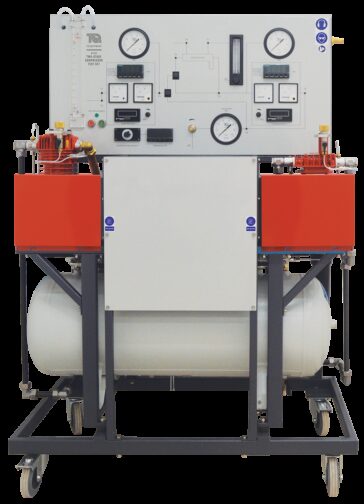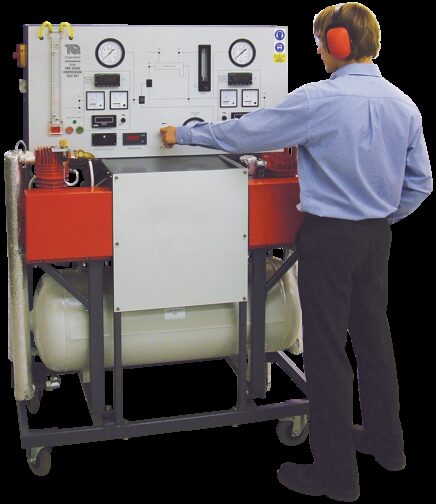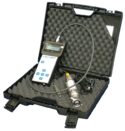Experiment
GT103
TWO-STAGE COMPRESSOR TEST SET
A self-contained mobile two-stage reciprocating air compressor test set to allow investigations into the operation and performance of compressors with a single-stage, two stages and two stages with inter-cooling. Also covers the fundamentals of heat engine theory.
If you have any questions or you'd like to discuss a product, please call us.
+44 1159 722 611TWO-STAGE COMPRESSOR TEST SET
This test set has two independently-controlled, motordriven compressors, intercooler and air receiver. It works as a single-stage, two-stage or two-stage compressor with intercooler. All controls and instrumentation are on an easy-to-operate mimic panel.
Electric motors and low-maintenance toothed belts drive two twin-cylinder, air-cooled reciprocating compressors. Electronic drive units independently control both motors. Meters show motor electrical power consumption of each motor. A close-coupled load cell on each motor measures torque. A sensor on each motor measures speed, shown by a digital indicator. The product of the torque and speed gives true shaft power.
To allow students to study different types of air-compressor systems, diverter valves allow air to move in different directions. These include:
- From the first stage to the receiver
- Directly to the second stage
- To the second stage, by means of the integral water-cooled intercooler
Independent control of the two compressor speeds allows flexibility to match the two compressors under different conditions. Interlocks allow safe changes from one method of operation to another while the equipment works, and prevent misuse. For safety, all pressurised lines have relief valves.
To help produce pressure and volume diagrams, TecQuipment offers the optional Pressure Indicator (GT103a). It fits to an adaptor on each of the two compressors to measure the pressure changes during a compression cycle. One Pressure Indicator is enough to test each compressor, one at a time. However, you may choose to use two for convenience.
Learning outcomes
- Volumetric, mechanical and Isothermal efficiency
- Indicated work done
- Motor output power (compressor shaft power)
- Pressure ratio
- Temperature ratio
- Inlet dryness calculations
- P-V indicator diagram (needs optional Pressure Indicator)
- Effect of inter-stage cooling on compressor total power requirements and effect on cycle temperatures
- Effect of two-stage compression and inter-stage pressure on power requirements





